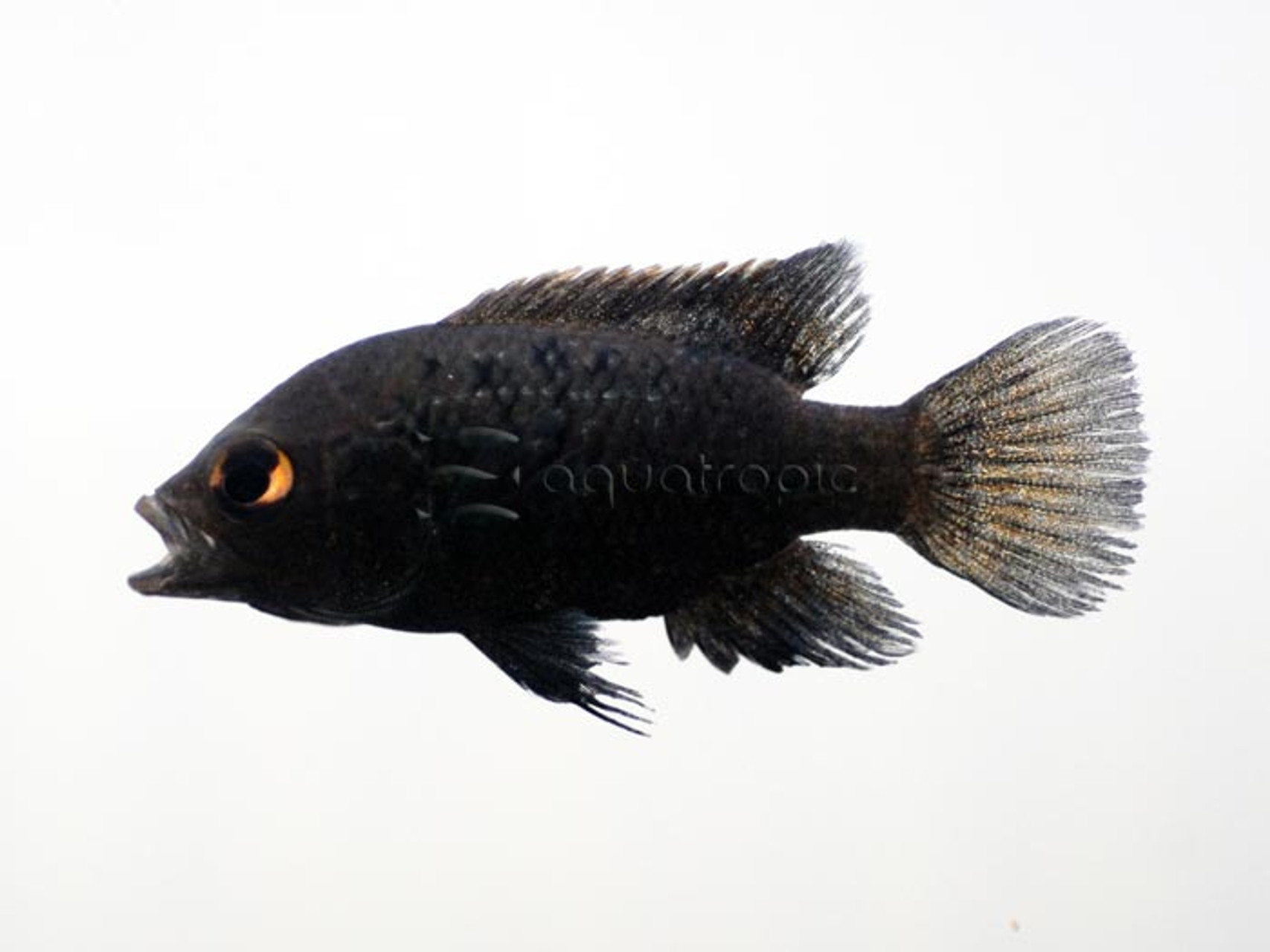Black Diamond Cichlid (Paratilapia polleni)

The cichlid species found in Madagascar are not as well-known as their relatives from Africa and the Americas, but this unique fauna is home to some spectacular and rarely seen aquarium fishes. There are relatively few cichlids found on the island, around 30 recognized species in total are native, which pales in comparison to the 2000+ species found elsewhere in the world. This low diversity reflects the fact that the cichlids of Madagascar represent an early offshoot of this family, predating the emergence of their more successful cousins.
Of the 30 Malagasy cichlids, nearly all belong to one of three main genera (Paretroplus, Ptychochromis, and Ptychochromoides). Rounding out the bunch is the rarely seen Katria katria and the critically endangered Oxylapia polli, neither of which have much presence in the aquarium trade. And, lastly, there is Paratilapia polleni, the Black Diamond Cichlid, arguably the most beautiful cichlid in Madagascar and a species which is gaining prominence among aquarists.
Paratilapia is the only strictly piscivorous cichlid on the island and is said to feed primarily on bedotiid rainbowfishes. It has specialized canine-shaped teeth for the job, but in aquariums Paratilapia will accept any sort of meaty or dry food offered.
With a maximum size of around one foot, this is a robust fish requiring an appropriately sized tank (90+ gallons). But it is also reported to be peaceful for a fish of its dimensions, with some comparing it to the Frontosa Cichlids of Lake Tanganyika. This is certainly an apt comparison, though the two of course look little alike.
There is presently only a single Paratilapia species that is considered valid, P. polleni, but genetic data argues for there being several cryptic species present on the island (some of which do have existing names in the literature). Aquarists have recognized some of this cryptic diversity, as there are some minor differences in the appearance of these fishes depending on which watersheds they are sourced from. The fishes from these populations can vary in their base coloration (black vs greenish-black) and the relative size of their white markings.
The sexes are generally similar, with males growing a bit larger and having attenuated tips to the dorsal and anal fins. Captive breeding is considered uncommon in home aquariums, though specimens available through the aquarium trade are farmed. Unfortunately, due to the rampant habitat destruction in Madagascar, along with the introduction of non-native species, many of this region’s cichlids are increasingly imperilled with extinction. Presently, Paratilapia polleni is considered “Vulnerable” by the IUCN, but this may not take into account the many cryptic populations present on the island.